|
|
|
|
|
|
|
|
|
Traditional lines and shapes of stem and stern posts
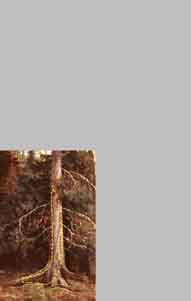 Full scale image (38Kb)
Full scale image (38Kb)Stem an stern posts ("kokora") were traditionally carved out of a lower part of a spruce trunk with a big root, growing at a right angle. This root made the sticking up-and-backwards part of the stem, called "kokovka" - a very characteristic feature with Pomor and Carelian boat lines. The same tree part was taken for some of the ribs - those in bow and aft, where a boat has wedge-shaped crossection. |
|
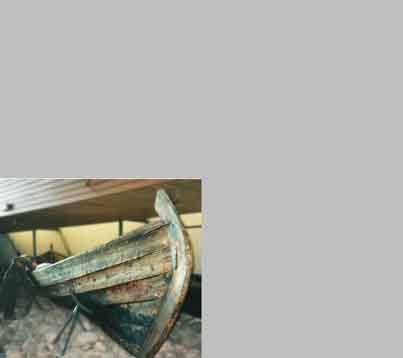
Full scale image (58Kb) Shnjaka from Murman coast, built presumably in 1905. Exhibited in Oslo maritime museum. |
|
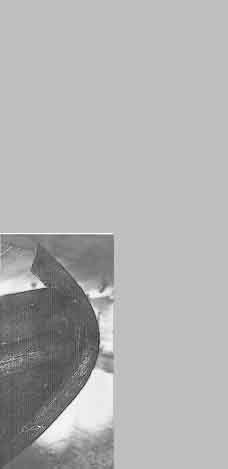
Full scale image (29Kb) Same as above - shnjaka from Murman coast, her prow. |
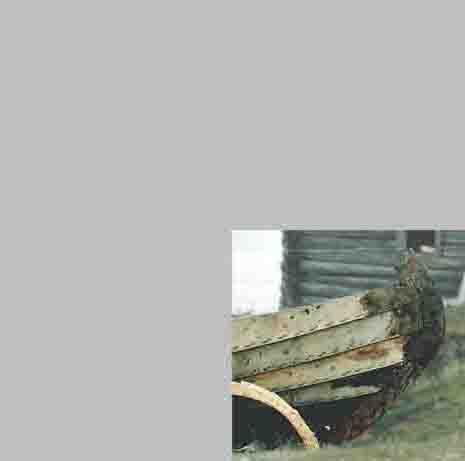
Full scale image (37Kb) Prow of the replica we build. October 2002. |
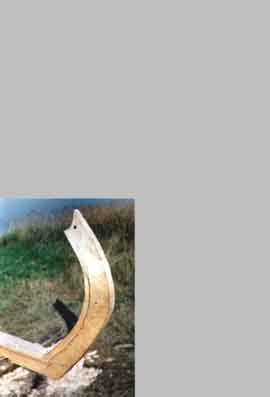
Full scale image (47Kb) Shnjaka reconstruction in 2001. Stem post fitted. Wood grains are clearly visible. One can compare them to the pattern of grains visible on the above pictures of shnjaka in Oslo museum, to see that the stems were carved out of the same part of a tree. |
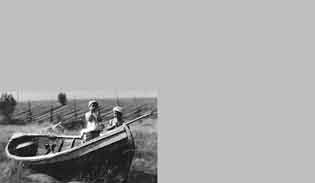
Full scale image (29Kb) So called "keel boat" from Vodlozero lake, built in 1960ies, photo 1974. Her design and lines are identical to "kizhanka" boats of Onego lake, the lines of her stem are just like shnjaka's. As distinguished form "vodlosjorka", she has deeper draft with protruding keel (that's why "keel boat"), and sails better. These boats were designed mainly for transportation under sail, while shallow drafted and maneuverable "vodlosjorkas" were purposed for work with fishing nets and catches. |
 Full scale image (21Kb)
Full scale image (21Kb)Another "keel boat" from Vodlozero, presumably built in 1970ies. These boats already had inside engines, they were not used under sail. |
|
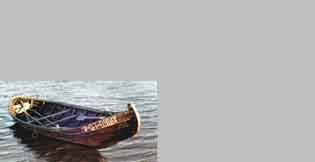
Full scale image (28Kb) "Vodlosjorka" built in 1980ies by Ivan Eliseev (picture 2001). Her stem "kokora" is much longer but more gently inclined. |
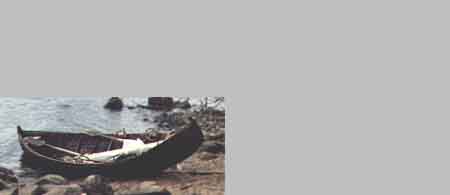
Full scale image (21Kb) "Vodlosjorka" sewn with spruce roots in 1996. All technology and design are just same with recently built boats (to the left), only root sewing was implemented instead of metal nails, and planks were wedge split and axe carved instead of sawmill wares. |
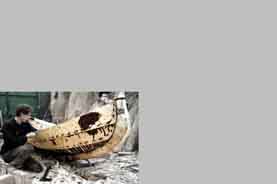
Full scale image (37Kb) Stem of the "vodlosjorka" boat sewn at Fotevikens maritime museum in 1999. This "kokora" is a little more elaborated in lines, accordingly to older traditions of 1950-60ies. |
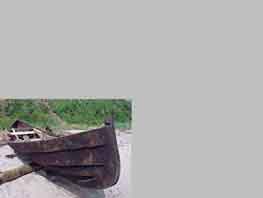
Full scale image (38Kb) Stern of the "vodlosjorka" at Foteviken, 1999. Stern posts were carved out of the same lower spruce trunk part with a big root. Front and aft of these boats differ in proportions only. |
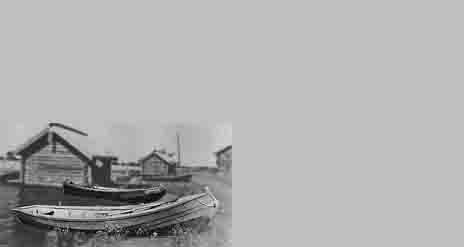
Full scale image (30Kb) Stem of a classical "kizhanka" boat in Kizhi. |
|

Full scale image (58Kb) Stem fragment of an old vodlosjorka, on Vodlozero. Construction year and boatbuilder unknown. Photo 2005. |
|
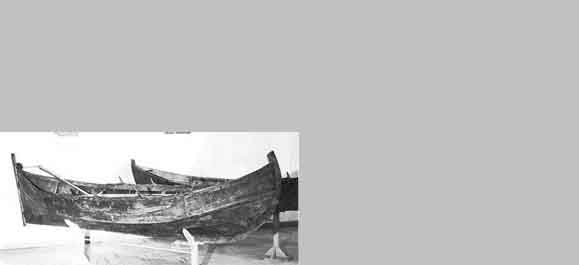
Full scale image (33Kb) Lapp boat built in 1871, exhibited in Tromsø museum in Norway. Photo: Arne Emil Christensen. This boat is like a smaller version of Kola shnjaka, both in sewing technique and material - hemp(?) twine, and in lines and design. It was used for cod fishing, too. Lapp boatbuilders were known to build shnjakas for Pomor fishermen on Murman. | |
|
|
|
|
|
|
|
|
|
last update: February 2006 report problems with this page to ![]()